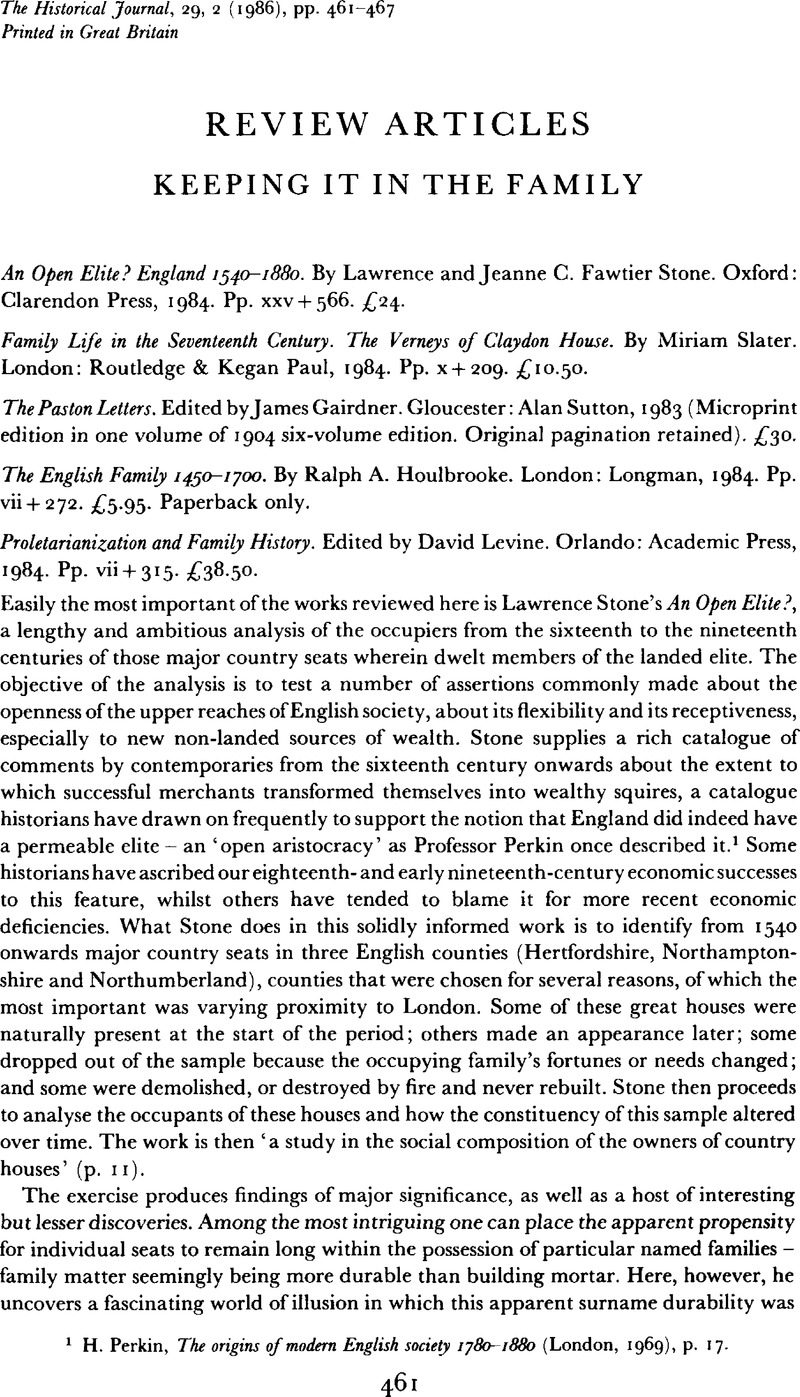Article contents
Keeping it in the Family
Published online by Cambridge University Press: 11 February 2009
Abstract

- Type
- Review Articles
- Information
- Copyright
- Copyright © Cambridge University Press 1986
References
1 Perkin, H., The origins of modern English society 1780–1880 (London, 1969), p. 17Google Scholar.
2 Appendix: table 6.2 (no pagination).
3 Hollingsworth, T. H., ‘The demography of the British peerage’, supplement to Population Studies, XVIII, 2 (1964)Google Scholar; Clay, C., ‘Marriage, inheritance, and the rise of large estates in England, 1660–1815’, Economic History Review, second series, XXI, 3 (1968), 503–18Google Scholar; Bonfield, L., ‘Marriage settlements and the “Rise of great estates”: the demographic aspect’, Economic History Review, second series, XXXII, 4 (1979), 483–93CrossRefGoogle Scholar; Rubinstein, W. D., Men of property (London, 1981)Google Scholar.
4 Sculpture in Britain: the Middle Ages (Harmondsworth, 1972)Google Scholar.
5 Oxford (1965).
6 London (1977).
7 Wrigley, E. A., ‘The changing occupational structure of Colyton over two centuries’, Local Population Studies, XVIII (spring 1977), 9–22Google Scholar; Outhwaite, R. B., ‘Population change, family structure and the good of counting’, Historical Journal, XXII, 1 (1979), 236Google Scholar.
8 For examples see Outhwaite, R. B., ‘Progress and backwardness in English agriculture, 1500–1650’, Economic History Review, second series, XXXIX, 1 (1986), 1–19CrossRefGoogle Scholar.
- 1
- Cited by


